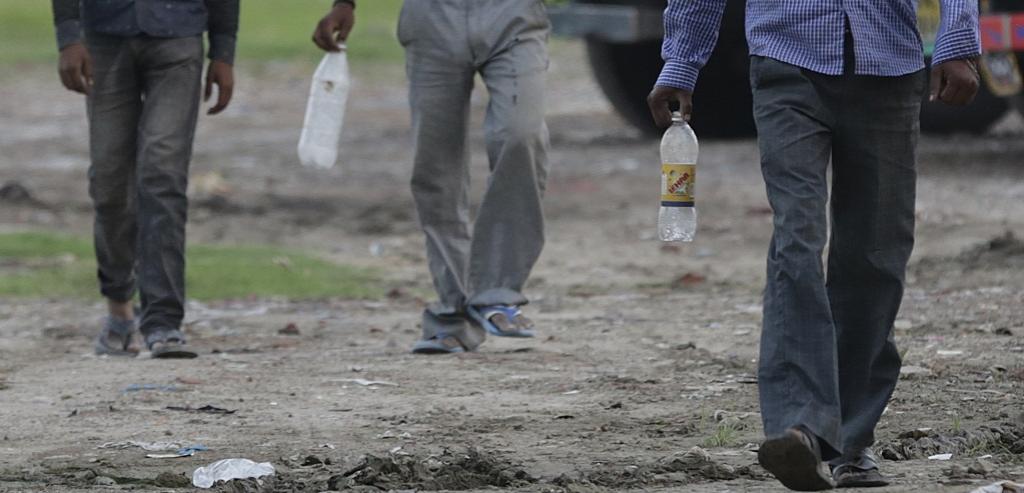

At a book launch in New Delhi, sanitation experts say the scheme has defeated the purpose of community-led total sanitation approach



Swachh Bharat Mission (SBM) has shifted sanitation policy’s focus to the number of toilets constructed from collective behavioural change, said sanitation experts.
Despite the fact that community-led total sanitation (CLTS) has brought about change in the last few decades, the pressure of targets has changed the C in CLTS to collector, said VK Madhavan, chief executive, WaterAid.
“We need community involvement to look at the hygienic behaviour, but it [sanitation] is becoming a political imperative. We are seeing tunnel vision lead to a narrow emphasis on toilet construction and usage, to some extent, but hygiene is left behind. The assumption is that you have access to a toilet and you use it to adopt hygienic behaviour, but there isn't enough evidence to support it,” said Madhavan.
They spoke at the launch of book Scaling up CLTS: From village to nation, by Kamal Kar, founder of CLTS Foundation in New Delhi on April 29, 2019.
Madhavan expressed disappointment in how the CLTS’ fundamentals were not being met in the SBM. “The CLTS approach is not only an effort to help people build toilets and use them. It is meant to help people transform towards hygiene behaviour and that is missing from the scheme,” said Madhavan.
Kar, whose organisation has worked on sanitation practices through technical assistance and policy advocacy across Asia and Africa, said SBM is a “great initiative as it is the Prime Minister’s number one national agenda, which has its own strengths” but it has turned people’s movement into government’s movement.
The government has pledged to make India open-defecation free by October 2, 2019, by providing access to toilets to all rural households. According to government estimates, more than nine crore toilets had been constructed across the country till February 5, 2019, under SBM, which was launched in 2014.
Experts pointed out that despite there being a dramatic increase in the number of toilets constructed, there are challenges the country faces before it is declared ODF. Few of them are people being left out of baseline and growth in population, which means new families will emerge and will need new toilets.
“Those of us who work on the ground know how difficult it is to declare one village ODF. It’s not an easy task and there are huge community dynamics involved. But with the PM or the President saying the country is ODF without going into the depth of the subject, dilutes the story,” said Kar.
He said after the SBM was introduced, the money allocated towards behavioural change under Nirmal Bharat Abhiyan (NBA), started by Atal Bihari Vajpayee government in 1999, was used for toilet construction.
While criticising the government model of giving subsidies for toilet constriction, Kar talked about Bangladesh, which was once a hub of open defecation and below India in sanitation rankings. The country achieved ODF status in 2015.
The CLTS model was, for the first time, introduced in Bangladesh and it was against subsidy-driven construction of toilets. Instead of generating collective community demand for toilets, it highlighted public health ramifications of open defecation.
“Subsidies don’t necessarily have a role to play if we are talking about communities. The unfortunate reality is that subsidies have become a part of political imperative and a necessity in this country. Even for something as personal as an individual household toilet, we believe the only way people will construct this is if we provide subsidy and that in some sense adversely impacts the processes that are critical to CLTS,” said Madhavan.
We are a voice to you; you have been a support to us. Together we build journalism that is independent, credible and fearless. You can further help us by making a donation. This will mean a lot for our ability to bring you news, perspectives and analysis from the ground so that we can make change together.
India Environment Portal Resources :

Comments are moderated and will be published only after the site moderator’s approval. Please use a genuine email ID and provide your name. Selected comments may also be used in the ‘Letters’ section of the Down To Earth print edition.